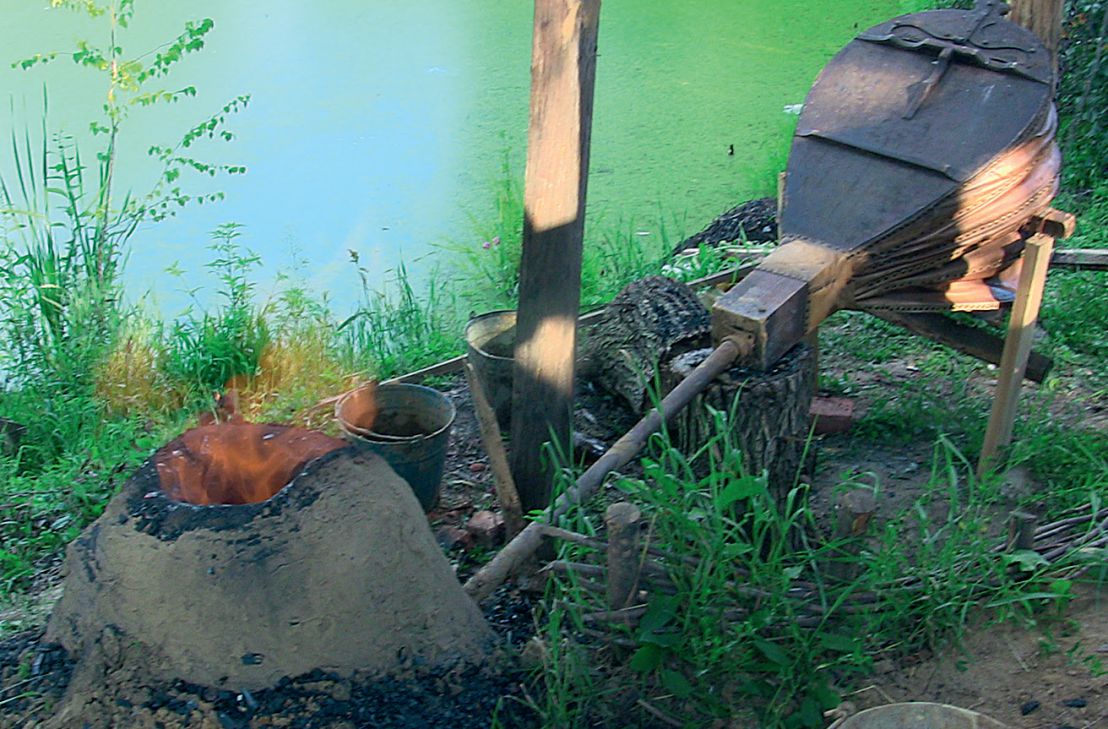Modelling of bloomery processes in a medieval Russian furnace
DOI:
https://doi.org/10.35686/AR.2018.24Keywords:
bloomery process, modelling, furnace, metallographyAbstract
A fully preserved 14th-century AD bloomery furnace was excavated in 2014 on the settlement of Kolesovka-4 (Russia, Tula district). This extraordinary find has been taken as a model for experimental work. The iron ore used came from the Loknya River, a metallurgical conglomerate used came from the archaeological site of Staraya Ryazan. The most successful result was achieved by using the conglomerate from Staraya Ryazan – three pieces of blooms were made, weighing about 1 kg, and consisting of soft iron and a large number of very coarse slag inclusions. These show a similar trace-element composition as the medieval bloom coming
from the same site. Experiments conducted have shown that the bloomery furnace uncovered at the Kolesovka-4 settlement is a rational pyrotechnological construction, allowing for a large number of smelting cycles.
Downloads












